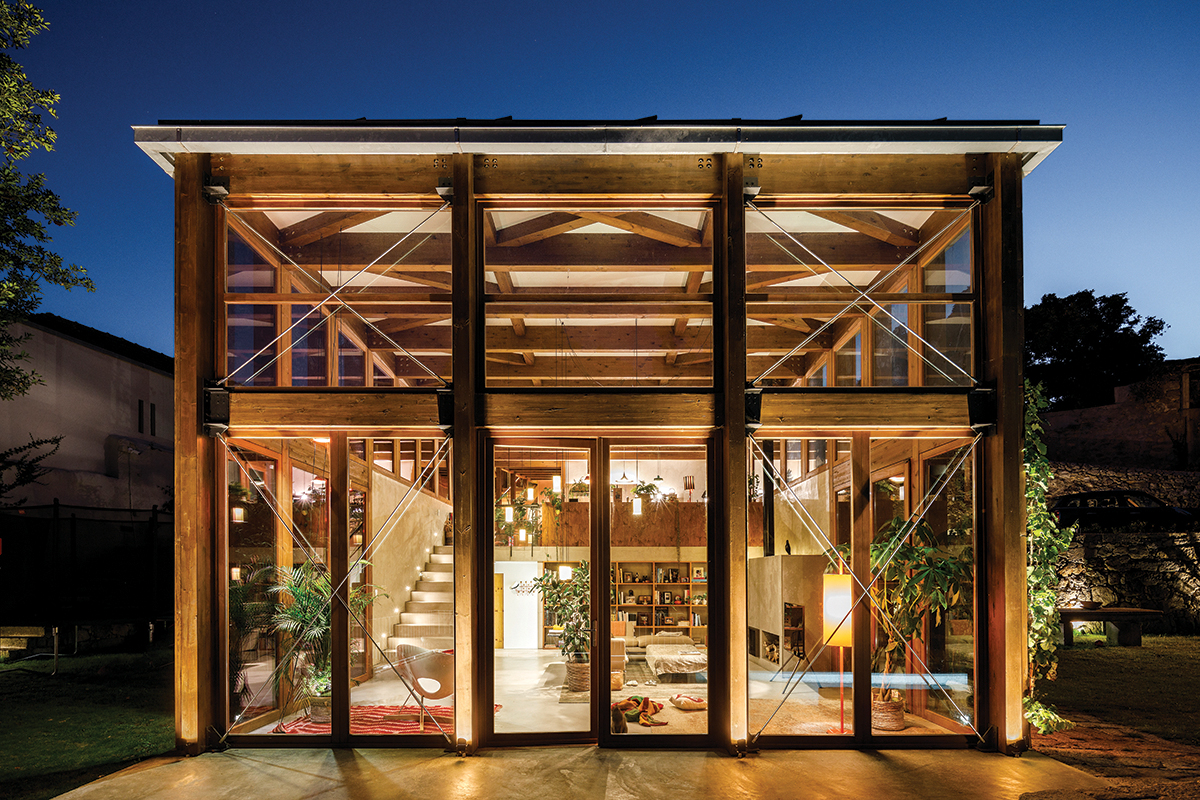
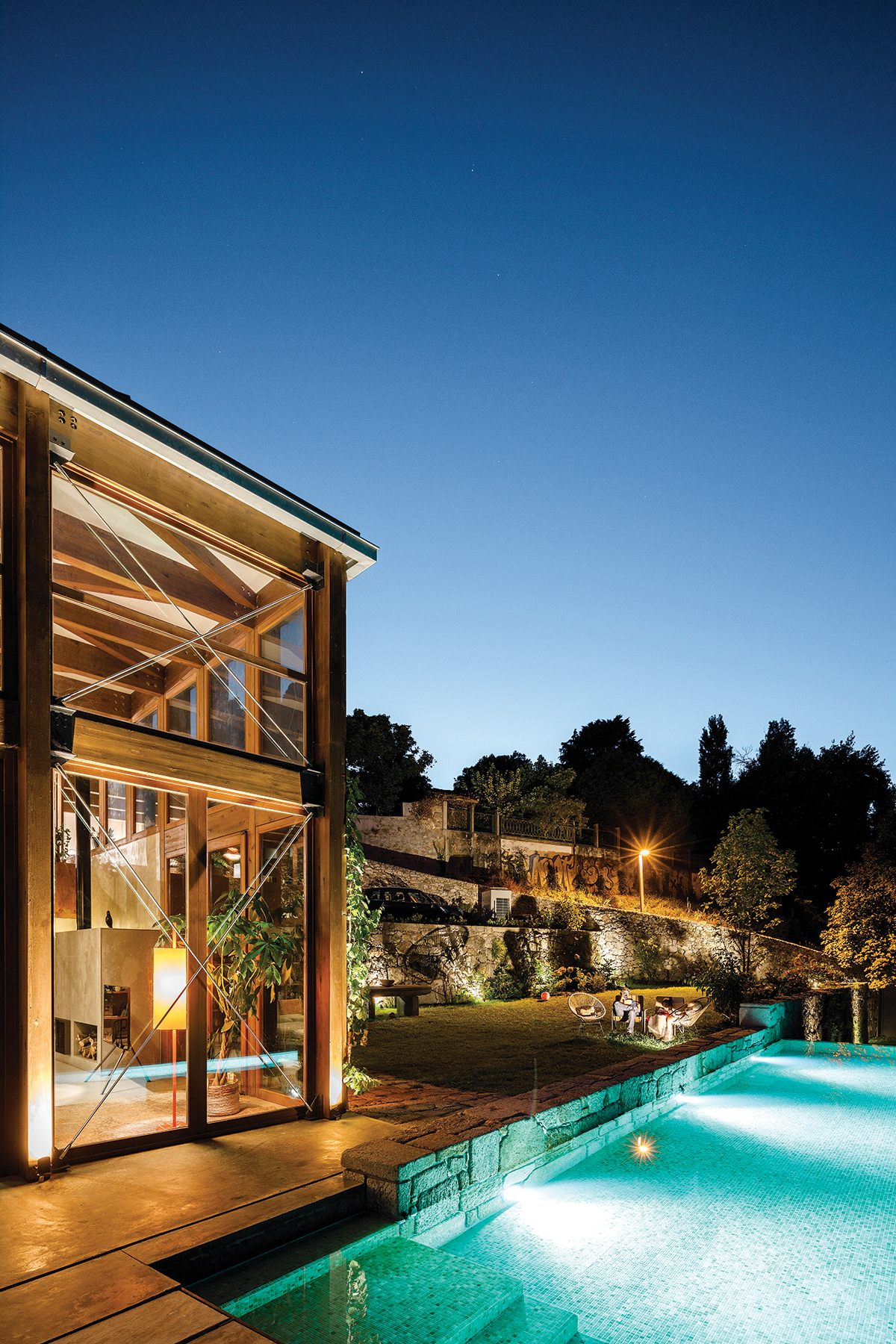
포르투갈 Porto의 Caminhos do Romântico 일대는 대중적인 주택과 호화로운 저택이 공존하며, 다양한 품종의 나무와 식물들이 우거진 공원, 그리고 산업 고고학적 가치를 지닌 공간과 설비가 남아있는 독특한 곳이다. Floret Arquitectura의 이번 프로젝트 GOLGOTA는 오래된 주택을 리노베이션하고 새로운 동을 신축하는 작업이었다. 새롭게 태어난 주택 GOLGOTA는 앞으로 빽빽한 숲이, 뒤로는 Douro 강이 위치하여 아름다운 자연환경을 마음껏 누릴 수 있으며, 오래된 건축물과 새로운 건축물이 조화롭게 어우러져 사용자들에게 쾌적하고 여유로운 일상을 제공하는 공간이다.

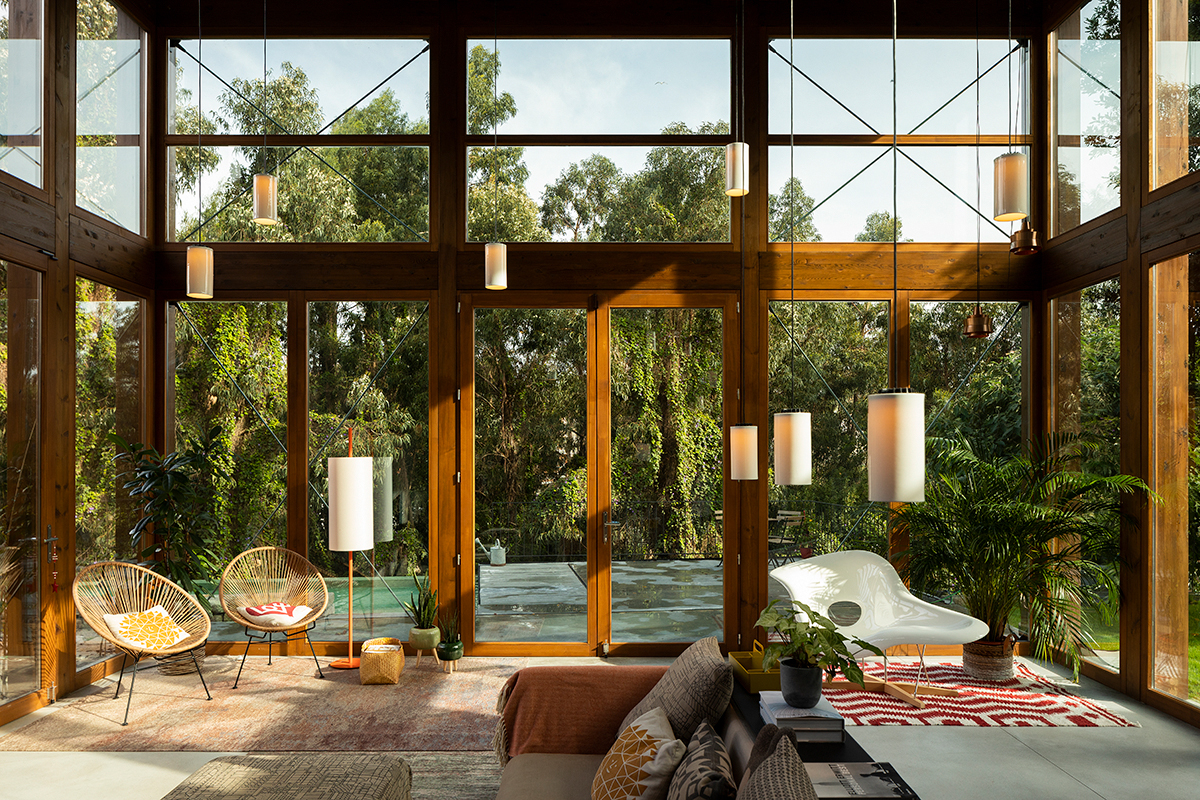
The "Caminhos do Romântico" territory in the city of Porto (Portugal) has unique characteristics, mixing bourgeois houses with popular housing, interspersing gardens full of camel trees and other exotic species and with backyards but also several examples of industrial archeology. An important part of these routes is made through paths that have markedly rural characteristics, with high walls of the old farms and by the fountains and old community washing tanks. Our intervention is located in one of these routes, more specifically in the route that goes from Golgota to Massarelos, comprising points such as the Faculty of Architecture of the University of Porto, the «Casa da Agustina Bessa-Luís» and other bourgeois houses and workers houses. The whole set is surrounded by a dense patch of green and the Douro River, in the background, is an omnipresent element.
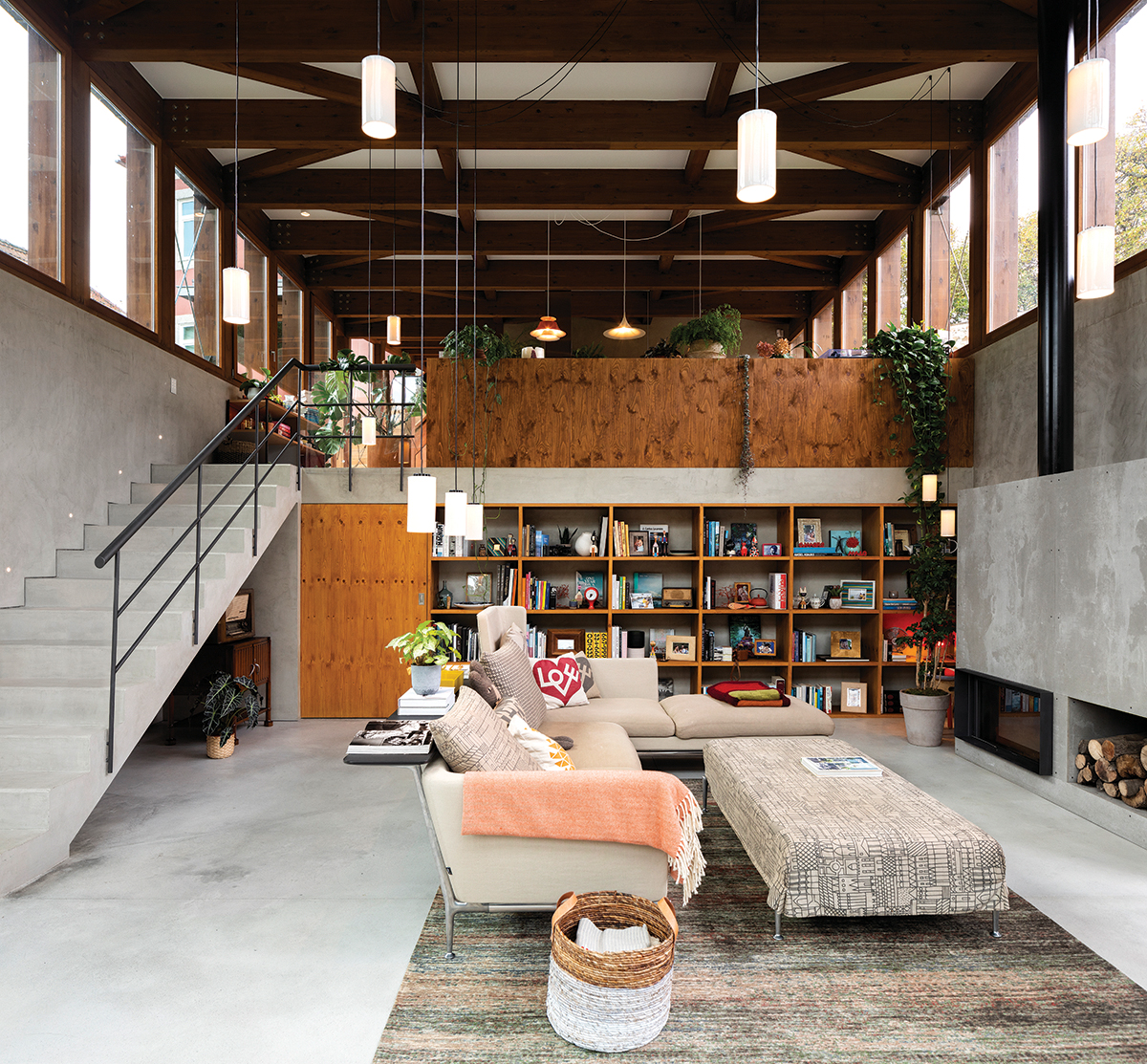
The primitive house, which was completely in ruins, was recovered using the techniques and conventional architectural language of the original historical period. The extension of the building was made at a lower level, taking advantage of the terraces, using wood and concrete, clearly demarcating the addition and the original in
chronological terms. All the walls of the perimeter were recovered, as well as the retaining walls of the terraces, as well as the garden, the existing species were preserved and others were incorporated according to the specificity of the place. The pool was designed in such a way as not to modify the orography. The overall result has proved to be quite harmonious, with the new elements added being practically invisible to anyone traveling through the «Caminhos do Romântico».
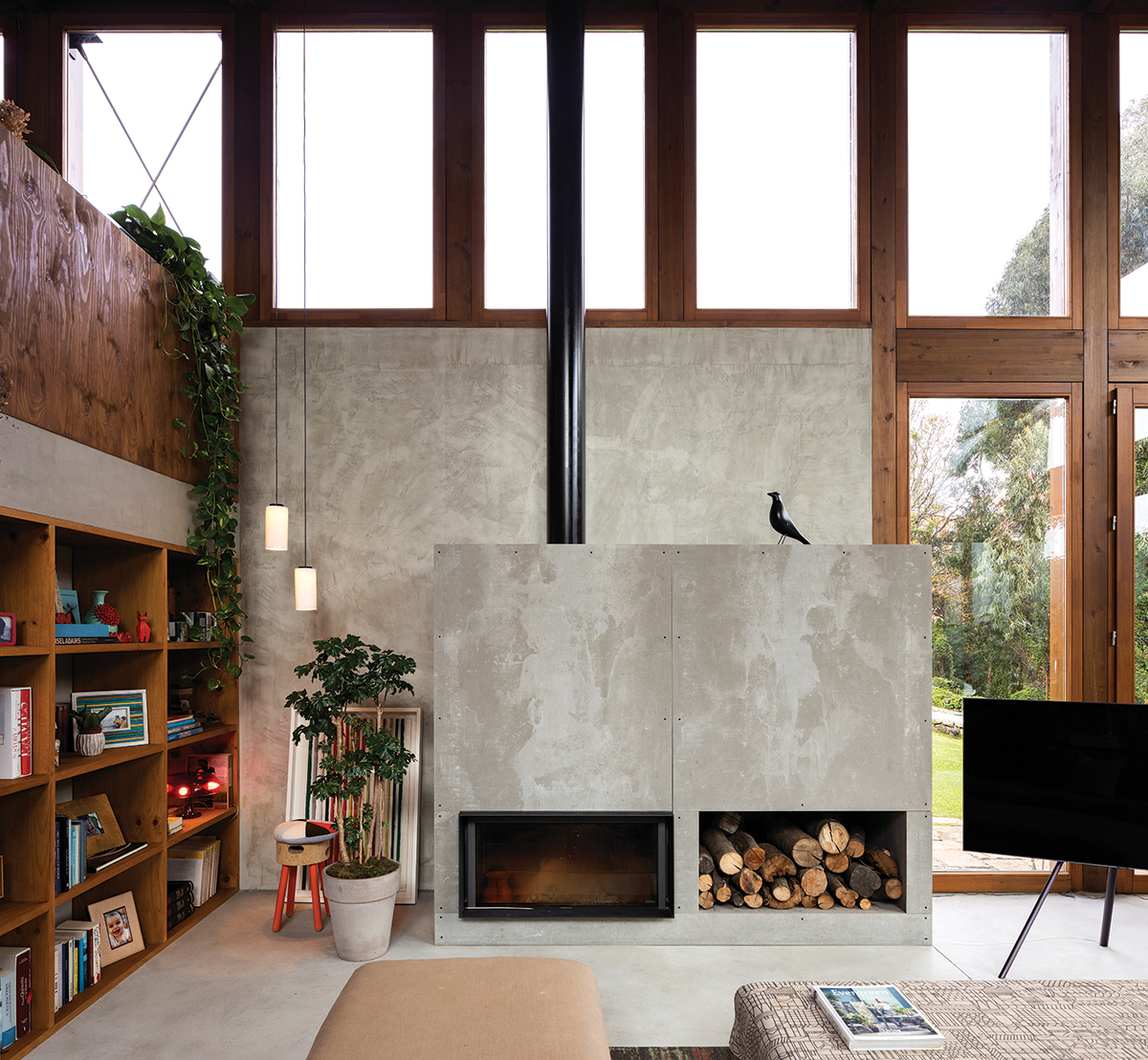
The ground extends over three terraces facing east with a building with four floors destined to the most private area. Given the small size of this building, it was proposed to expand the area by introducing two new elements: a volume to extend the housing area and a swimming pool. The new volume includes areas for more public use such as the entrance hall, kitchen, living room and pool support facilities. It appears perpendicularly to the existing building and consists of two floors, extending to the east, following and relating to several levels with the terraces on the ground, thus distributing different uses such as different living areas, paths, etc.
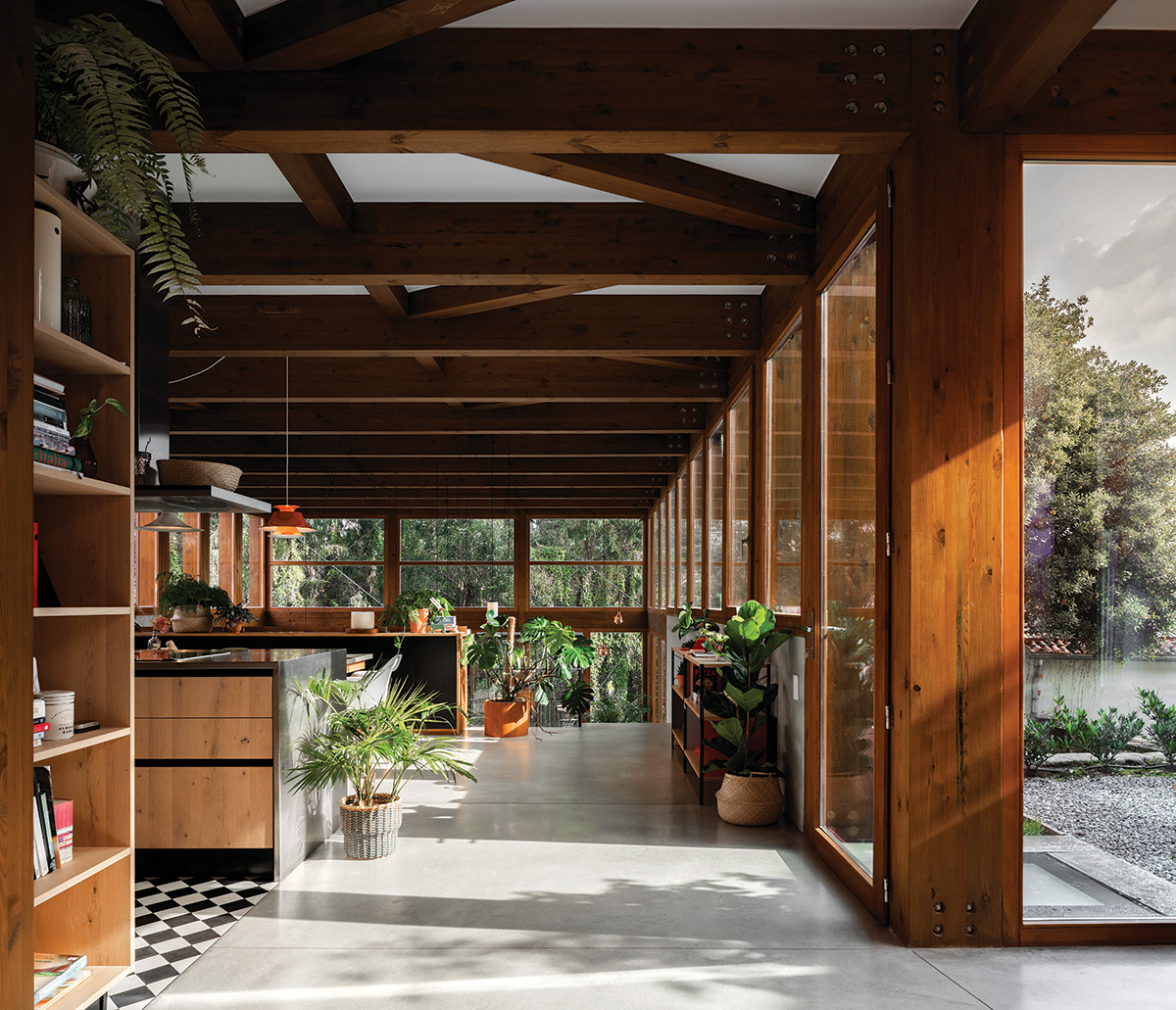
폐가 수준으로 노후했던 기존의 건물은 건축물이 지닌 역사와 상징성을 유지한 채 현대적인 기술을 통해 복원됐다. 기존 건물의 저층부는 증축한 건물로 연결되도록 설계했고, 목재와 콘크리트를 사용해 각 건물들 간의 명확한 경계를 설정했다. 신축된 공간은 가족 구성원들이 공동으로 사용하는 가족실, 테라스와 연결된 간이 주방 등이 자리한다. 목재 프레임과 통유리창으로 벽의 삼면을 구성해 채광의 효과를 극대화했고, 복층 구조를 통해 각 공간이 단절되지 않고 개방감이 느껴지도록 했다. 리노베이션을 거쳐 깔끔하게 새 단장한 기존 건물에는 침실, 취미실 등 가족 개개인의 공간을 채워 넣었다.
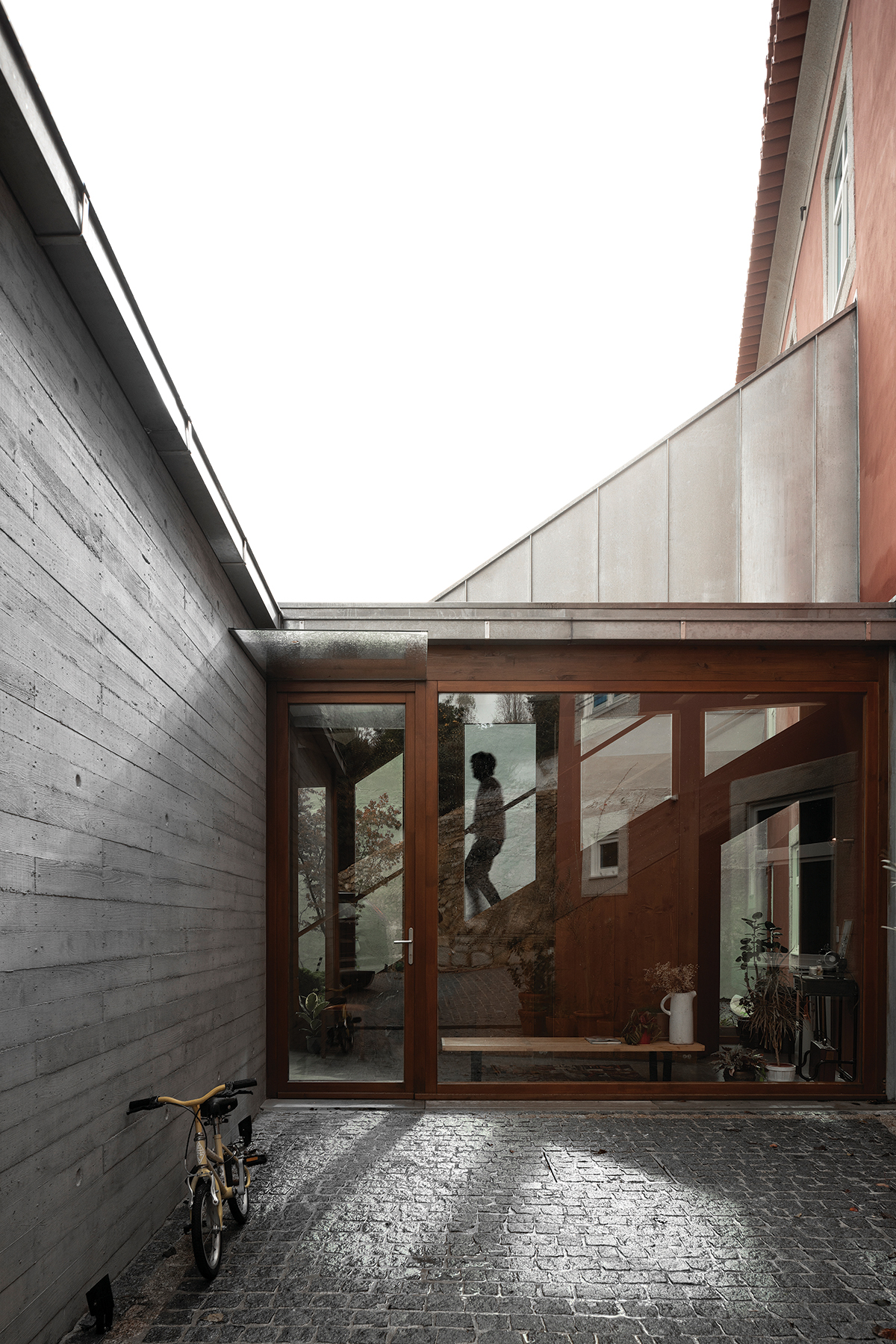
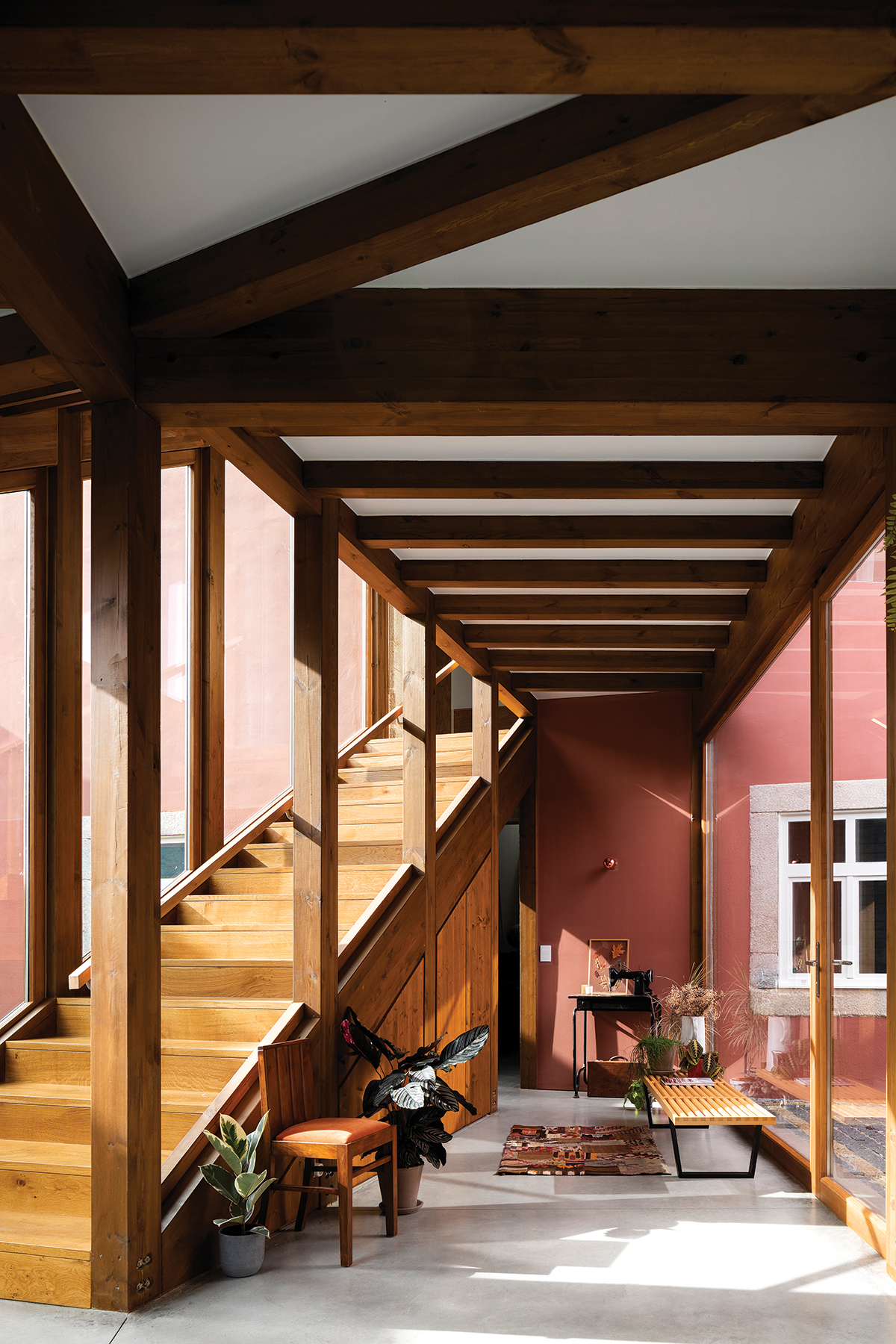
This intervention managed to reconcile the needs of a large family with the conditions resulting from the recovery of the built heritage, respecting the specificity of the place and the Municipal Master Plan itself. The solution found - the coupling of a body made of wood and glass - allows to expand the living area of the building while preserving the integrity of the pre-existence and without coming into conflict with it, while allowing full and effective communication with the garden. The choice of wood makes it possible, in some way, to eliminate the weight of the relatively extensive expansion that had to be carried out, and to differentiate the contemporary intervention from the 19th century building.











0개의 댓글
댓글 정렬